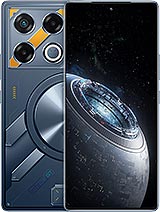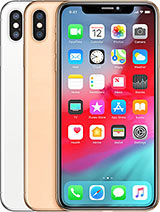Camera test: 2013 contender challenges the reigning champion
Introduction
We kicked off a Flashback series on our YouTube channel just last week, with the first video starring the Nokia 808 PureView. It is a smartphone with a cult following thanks to what was a groundbreaking camera at the time. That video prompted a closer look at the PureView camera, which we did in a head-to-head with the current image quality benchmark, the Xiaomi Mi 11 Ultra.
One thing led to another and here we are with yet another famed opponent for the Xiaomi - a Nokia Lumia 1020. A spiritual successor to the 808, the 1020 builds on the PureView concept but drops it from the official model name in favor of the then newly adopted Lumia branding brought by Microsoft's acquision of the Nokia smartphone business. PureView remains etched on the back of the 1020, alongside the Zeiss logo which marks the continued collaboration with the German optics specialists.

It says 41MP on the sizeable camera bulge of the Lumia 1020, so same nominal resolution as on the 808 PureView. Once again, it's one of those multi-aspect sensors where you can't actually get all the 41 million pixels because the extreme corners fall outside of the image circle projected by the lens. However, it can capture 38MP 4:3 images or 34MP 16:9 ones, much like the 808.
But same this sensor isn't. It's a smaller unit at 1/1.5" vs. the old model's 1/1.2" type and pixel size has shrunk accordingly - from the 1.4µm of the original PureView to 1.12µm on the 1020. On a positive note though, the 26mm-equivalent lens now has a slightly brighter aperture (f/2.2 vs. f/2.4) and, more importantly, it features OIS.

The Mi 11 Ultra, in case you've forgotten, is equipped with a 50MP 1/1.12-inch sensor on its primary camera, the largest on a smartphone (or at least a mainstream smartphone - the Sharp Aquos R6 and Leitz Phone 1 don't quite meet that criterion). It does have 1.4µm pixels - same size as on the 808, and notably larger than the 1020's. To reiterate, the Mi's sensor has a Quad Bayer design (with 4 adjacent pixels grouped under the same Red, Green, or Blue filter) while the Lumia is using a conventional Bayer array. The Xiaomi has a stabilized lens too, with a wider 24mm-equivalent focal length and an f/1.95 aperture.

The Nokia is a bit limited in terms of resolution settings and lets you choose between three modes - 5MP JPEG only, 5MP JPEG + 38MP JPEG, or 5MP JPEG + 38MP DNG RAW files (38MP changes to 34MP if you prefer the 16:9 aspect). Basically, if you want reasonably sized JPEGs, you've got to make them yourself. We did that in two different ways - one was by starting with the out-of-camera 38MP JPEGs and other by processing the RAW files, in both cases saving 12.5MP images to match the Xiaomi resolution. We also processed RAW files out of the Xiaomi, because why not.
One thing that you can't tell from looking at the photos is just how excruciatingly slow the Lumia 1020 camera is to launch. When starting it with the dedicated shutter release button with the phone in standby, it takes a good 4-5 seconds for the viewfinder to appear after the phone vibrates that it's registered your long press on the button (which itself takes about a second). The 808 is markedly faster when it comes to launch time.
Another issue we experienced on the 1020 is the prevailing inability to lock focus when zoomed in. Dedicated efforts of tapping on the screen to focus worked more often than not, but not for every scene, and not for every shot of the same scene. It is an eight-year-old unit, however, so we can attribute that to a long and storied life.

These are mostly curious observations that are not necessarily significant when it comes to the task at hand, which is comparing the image quality out of the two phones. That is, as long as we manage to get in-focus shots out of both phones, which we did.
Daylight image quality
Let's start out with a basic comparison - 5MP photos out of the Lumia versus 12.5MP ones from the Xiaomi, or essentially the default output of both phones. Unlike our experience with the Nokia 808, the Lumia 1020 exposes correctly - there was no underexposure to speak of. Dynamic range is very good - not Xiaomi-level good, with a bit more clipped highlights here or there, but certainly better than on the 808.








Daylight samples (5MP vs. 12.5MP): Nokia Lumia 1020 • Xiaomi Mi 11 Ultra
Another change we're seeing coming from older Nokia to the newer one is an increase in color saturation - the Lumia 1020 approaches the level of pop of the Mi 11 Ultra. The Xiaomi has a way of of warming up greenery that the Nokia doesn't exhibit, and we'd likely concede that the Lumia's rendition is more true-to-life in this respect.








Daylight samples (5MP vs. 12.5MP): Nokia Lumia 1020 • Xiaomi Mi 11 Ultra
When it comes to detail, the gap between 5MP and 12.5MP is a significant one and the Nokia can't match the Mi's resolving power. Still, the difference isn't huge on a per-pixel level, thanks in no small part to the longer focal length of the Nokia. As 5MP images go, these are pretty stellar.
We explored the nominal resolutions as well. The Nokia has an edge both in terms of quantity and quality of detail. The regular Bayer color filter means that the Lumia can record more intricate color information, while the Quad Bayer Xiaomi needs to compensate for its coarser color filter grid with heavier sharpening. Having said that, the Nokia images have a prevailing all around softness and could benefit from some sharpening in post processing themselves to reveal the best the phone is capable of.










Daylight samples, full resolution (38MP/50MP): Nokia Lumia 1020 • Xiaomi Mi 11 Ultra
We then proceeded to resize these 38MP JPEG images of the Lumia to match the default 12.5MP resolution of the Xiaomi. Since sharpening is in our hands now, we applied a liberal amount. Under these conditions, the Nokia records more detail in the final image than the 5MP mode, and we'd say it's also a step ahead of the Xiaomi.








Daylight samples (38MP->12.5MP vs. 12.5MP): Nokia Lumia 1020 • Xiaomi Mi 11 Ultra
Next up, some RAW images out of the two phones, processed to taste and exported in 12.5MP again. There's little to set the two phones apart in terms of color (seeing how they're processed to the same person's taste). Dynamic range is a bit wider on the Xiaomi, but you don't want to be shooting RAW on a modern smartphone if dynamic range is the most important thing - the image stacking in the default Photo mode gets better results anyway.








Daylight samples, processed from RAW (38MP->12.5MP vs. 12.5MP): Nokia Lumia 1020 • Xiaomi Mi 11 Ultra
On a pixel level, with the right attitude and enough time and deliberation to bump sliders left or right, you can get very similar results. The Nokia will do better with fighting off moire thanks to the finer color data it's captured in the first place. The Xiaomi, on the other hand, has slightly cleaner results when it comes to noise, though if we had the patience to also fiddle with those sliders on the Nokia, we could have probably achieved similar results.
It wasn't an easy decision what exactly zoom level we should be comparing these at, but we ultimately settled on zooming in all the way on the Nokia and matching it on the Xiaomi. That would be a 3.1-3.3x zoom level for the Mi, hardly favorable since it falls right in between its 1x and 5x cameras. But then again, it would be 5MP vs 12.5MP shots, and the Xiaomi can also do composites from the main and tele cameras, giving you super sharp centers in most scenes.
We'd call this an easy win for the Xiaomi, particularly for center of the frame subjects at distances far enough so that the telephoto camera focus and join in for some composite action.








Daylight samples, zoom (3x-ish): Nokia Lumia 1020 • Xiaomi Mi 11 Ultra
Low-light image quality
In low light, the Lumia 1020 is a notable step up from the 808 and actually manages to expose in relatively dark scenes. Dynamic range remains limited, with light sources and their immediate vicinity getting blown out. Detail is fairly good in areas of balanced lighting though shadows remain murky.
The Xiaomi, in contrast, delivers excellent exposure and wide dynamic range in all sorts of demanding scenes and will squeeze out light in dark settings as well as preserve highlights from clipping to white.












Low-light samples (5MP vs. 12.5MP): Nokia Lumia 1020 • Xiaomi Mi 11 Ultra
Photos processed from RAW files make for a somewhat more level playing field. Exported at 12.5MP, the Nokia's JPEGs have similar detail levels compared to the ones out of the Mi. The Lumia images aren't quite as sharp and are noticeably noisier, though. On a positive note they do deal with moire better (the blinds in the window in the center of the first sample).
The Xiaomi wins in dynamic range, though it's not the same huge lead here as in full Auto - you have to let the auto image stacking do its thing for the best results.








Low-light samples, processed from RAW (38MP->12.5MP vs. 12.5MP): Nokia Lumia 1020 • Xiaomi Mi 11 Ultra
Zooming in to 3x, the Xiaomi doesn't quite have the wide dynamic range we've come to expect but it still manages to retain an advantage in tonal development at the extremes. It also achieves superior sharpness and resolves more detail. The Nokia does do an admirable job for its age, however.












Low-light samples, zoom (3x-ish): Nokia Lumia 1020 • Xiaomi Mi 11 Ultra
Video recording
As was the case with the Nokia 808, the Lumia 1020 enters the video recording comparison as a predetermined loser - it maxes out at 1080p resolution and pretty much the lousiest modern 4K capture will look better than the best 1080p in terms of detail, and the Xiaomi 4K is anything but lousy.
Indeed, we can read car license plates in the Xiaomi 4K clips and can essentially count leaves in trees, whereas the Lumia renders these more as general shapes. In fact, the 808 PureView's 1080p video was more detailed than the 1020's. And while we didn't have much love for the muted color reproduction on the 808, the 1020's oversaturated output with a strong warm cast doesn't look any better.


Daylight video sample frame grabs: Nokia Lumia 1020 • Xiaomi Mi 11 Ultra
Dynamic range on the Lumia 1020 is about on par with the older Nokia, possibly even slightly narrower, meaning nowhere as good as on the modern phone.
In low light, we're seeing a somewhat unexpected development, in that the Lumia 1020 with its smaller sensor captures videos that are a tiny step ahead of the 808 PureView. The new phone exposes brighter, lifting some midtones that were clipped to black on the 808. It's not quite bright enough for us to call the results from our test scene 'usable', and the flipside to the brighter exposure is a hike in noise, something that the 808 didn't show in such a pronounced way.


Low-light video sample frame grabs: Nokia Lumia 1020 • Xiaomi Mi 11 Ultra
Naturally, the Mi 11 Ultra captures vastly superior low-light videos. Here, you can see that it's not actually the middle of the night and the sky is still a dark navy blue. You can see trees and the buildings in the distance and you can make out sidewalk tiles - the higher resolution in conjunction with modern sensors and processing makes a world of difference.
Final words
The one extra year that Nokia had after the 808 PureView meant some meaningful upgrades in the camera performance for the Lumia 1020. We'd say the reduction in sensor size was successfully countered by the introduction of OIS, more powerful chipset and optimized processing.
More surprisingly, however, the Lumia 1020 also prevailed over a modern-day beast of a cameraphone like the Xiaomi Mi 11 Ultra - admittedly, only in some ways and in isolated instances, but still. The high-resolution regular Bayer sensor of the Lumia allows it to capture finer detail than the nominally higher-resolution but Quad Bayer imager of the Mi. That's in broad daylight and if you're willing to put in some work in post processing to extract that detail.

When it comes to low-light capture, or video recording in any light, or just general picturetaking where you want to press a button and get a great-looking photo, or speed and ease of use, the Xiaomi reigns supreme, as expected. That said, the Lumia 1020 was a brilliant performer in 2013 and while undoubtedly outdated now, it can still show a thing or two to the current crop of cameraphones.
Related
Reader comments
- Roman5
- 02 Aug 2021
- 0B4
the fact that this comparison even exists is a testament to just how ahead Nokia was in the smartphone camera Game at that time. Some people still cling hope that they might take back the crown of Smartphone Camera champion one day in the current yea...
- 01432
- 28 Jul 2021
- XTk
HAHAHA. Well yah! He did have the car and engine totally rebuilt in 2018. I am sure there is no emissions controls though. But, I ask you, what are the total emissions for producing a new car including materials mining and production and manufacturin...








 Samsung
Samsung Infinix
Infinix Apple
Apple Apple
Apple Xiaomi
Xiaomi


